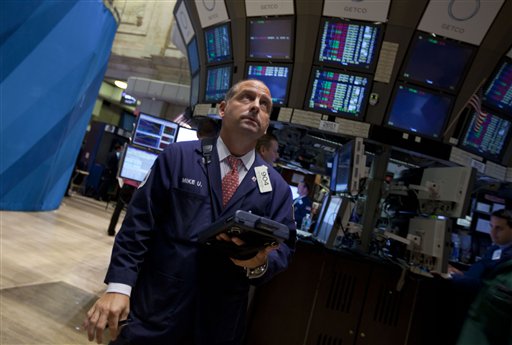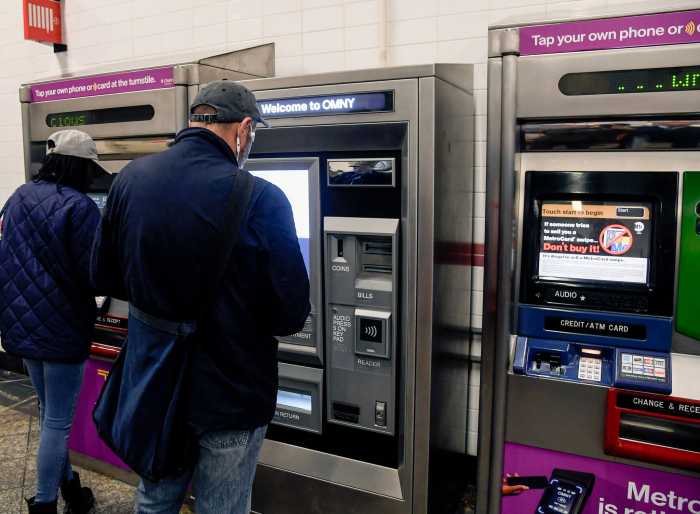
Gripped by fear of another recession, the financial markets suffered their worst day Thursday since the crisis of 2008. The Dow Jones industrial average fell more than 500 points, its ninth-steepest decline ever.
The sell-off wiped out the Dow’s gains for 2011. It put the Dow and broader stock indexes into what investors call a correction — down 10 percent from the highs of this spring.
“We are continuing to be bombarded by worries about the global economy,” said Bill Stone, the chief investment strategist for PNC Financial.
The day was reminiscent of the wild swings that defined the markets during the crisis three years ago. Gold prices briefly hit a record high, oil fell an extraordinary $5 a barrel, and frightened investors were so desperate to get into some government bonds that they were willing accept almost no return on their money.
It was the most alarming day yet in the almost uninterrupted selling that has swept Wall Street for two weeks. Since July 21, the Dow has lost more than 1,300 points, or 10.5 percent of its value. It has closed lower nine of the 10 trading days since then.
For the day, the Dow closed down 512.76 points, at 11,383.68. It was the steepest point decline since Dec. 1, 2008.
Thursday’s decline was the ninth-worst ever by points for the Dow. In percentage terms, the decline of 4.3 percent does not rank among the worst. On Black Monday in 1987, for example, the market fell 22 percent.
Two weeks ago, investors appeared worried about the deadlocked negotiations in Washington over the debt ceiling. Almost immediately after that was solved, concerns about the economy took over, and the selling only accelerated.
On Thursday, growing fear about the weakening U.S. economy was joined by concern in Europe that the troubled economies of Italy and Spain might need help from the European Union.
The European Union has already given financial assistance to Greece and Ireland, two countries that have struggled to pay their debts. A financial rescue package for Italy or Spain might be more than the group of countries can handle.
Traders also unloaded stocks before Friday’s release of the government’s unemployment report for July, which is expected to show only weak job growth and perhaps a rise in the unemployment rate, which is 9.2 percent.
Together, they produced “a perfect storm of selling,” said Ryan Larson, head of U.S. equity trading for RBC Global Asset Management.
Not long ago, Wall Street had mostly convinced itself that the U.S. economy would improve in the second half of the year. Gas prices were falling, and Japanese factories were resuming production after disruptions from the March earthquake.
Then one report after another began to show that the economy was much weaker than first thought.
Manufacturing is barely growing. The service sector, which covers about 90 percent of the American work force, is growing at the slowest rate in a year and a half. People spent less in June than in May, the first decline since September 2009.
And the overall economy is expanding at the slowest pace since the end of the Great Recession. It grew at an annual rate of less than 1 percent for the first six months of this year, raising the risk of another recession.
In an indication of how frightened investors are, Bank of New York Mellon said it would start charging large investors to hold their cash. The bank’s clients include pension funds and large investment houses.
Mark Luschini, chief investment strategist for Janney Montgomery Scott, an investment firm in Philadelphia, said his clients saw the move from stocks into cash as “a parking lot to sort things out.”
“With the scars of 2008 still fresh,” he said, “some clients don’t want to miss the change to pre-empt further damage should it come.”
Other market indicators reinforced the risk-averse mood. Gold, which is seen as a safe investment when the stock market is turbulent, set a record price, $1,684.90 an ounce, before falling to finish the day at $1,659. Adjusted for inflation, gold is still far below its record high, reached in 1980.
The yield on the 10-year Treasury note fell to 2.42 percent, its lowest of the year, and the yield on the 2-year Treasury note hit its lowest ever, 0.265 percent. Bond yields fall when demand for bonds increases.
The yield on the one-month Treasury bill fell to almost nothing — 0.008 percent. Investors were willing to accept paltry returns in exchange for holding investments they believed to be stable.
The sell-off was broad. All 10 industry groups in the Standard & Poor’s 500 index fell. Energy companies lost almost 7 percent, materials companies were down 6.6 percent, and industrial companies lost more than 5 percent.
For a time, Kraft Foods was the only stock to rise among the 30 that make up the Dow industrials. Kraft announced Thursday that it would split in two, with one company focusing on snacks and the other groceries. But the selling eventually dragged Kraft under, too, and its stock finished down 52 cents, at $33.78.
Steep stock market losses like the ones of the past two weeks, can be self-reinforcing. A drop in stocks erodes household wealth and raises doubts about the economic outlook.
The result can be what economists call a vicious cycle. Stock losses take a toll on consumer confidence and make people more reluctant to spend money. Consumer spending makes up 70 percent of economic output in the United States.
Kevin Cook, senior stock strategist for Zacks Investment Research in Chicago, said investors’ worst fears probably won’t come true.
“This is not 2008 again,” he said. “We don’t have a liquidity crisis, we don’t have a credit crisis — this is just profit taking.”
Cook said he believes the S&P 500, which closed Thursday at 1,200.07, will trade between 1,150 and 1,250 between now and Oct. 1, at least until investors have enough information to determine whether the economy is in recession again.
Even taking into account the recent declines, stocks are still considered to be in an impressive bull market that began March 9, 2009, when the market reached its recession low.
The Dow closed that day at 6,547. Since then, it is up about 74 percent.
One year ago, the Dow closed at 10,680. About a month later, the stock market began a rally that took it almost to 13,000. The catalyst was an announcement by Federal Reserve Chairman Ben Bernanke that the Fed was preparing to launch a program to buy $600 billion in government bonds to keep interest rates low and help stocks rally.
The sell-off now comes at a time when corporate profits are growing. For the S&P 500, a measure called the forward price-to-earnings ratio has fallen to about 12, well below its long-term average of 16. That means that investors who buy now are paying less for each dollar in profits.
Based on what an investor now pays for corporate profits, stocks are now trading at their lowest levels in 20 years, said Tim Courtney, chief investment officer of Burns Advisory Group in Oklahoma City.
Few companies were spared in the sell-off. Just 3 of the 500 stocks in the S&P 500 moved higher. General Motors fell 4 percent despite beating analyst estimates for its quarterly earnings.
___
AP Business Writers Dave Carpenter in Chicago, Paul Wiseman in Washington and Pallavi Gogoi and Seth Sutel in New York contributed to this report.
Copyright 2011 The Associated Press.



































